Customer Onboarding and Expert Strategies to Ace It!
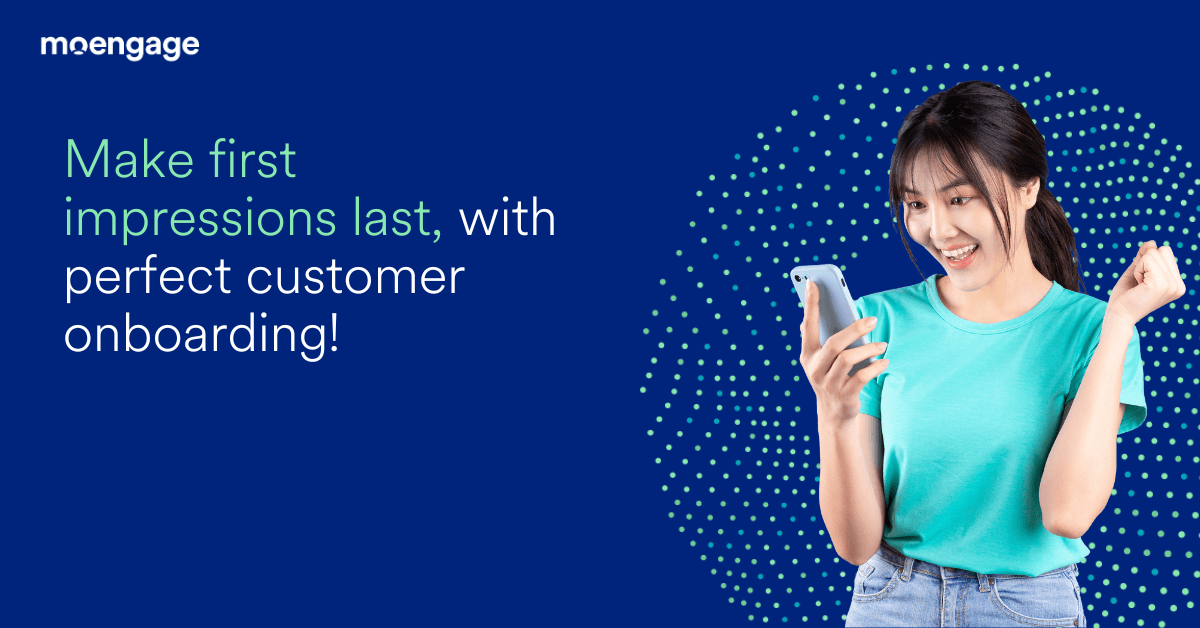
When it comes to building a successful brand, acquiring new customers is just the first step.
To truly thrive, you must ensure that those customers stick around, become loyalists for your brand, bring in referrals, and drive growth.
This is where customer onboarding comes in.
Strategically guiding new customers through the early stages of their journey helps your brand in two ways:
- Empowers you to set your customers up for success.
- Enables you to establish a strong foundation for a long-term relationship.
But what exactly does an effective customer onboarding process look like, and how can you ensure your efforts pay off?
In this article, we’ll explore the key strategies and best practices for creating a successful customer onboarding process that drives results.
Let’s dive in!
1. Why Is Customer Onboarding Important?
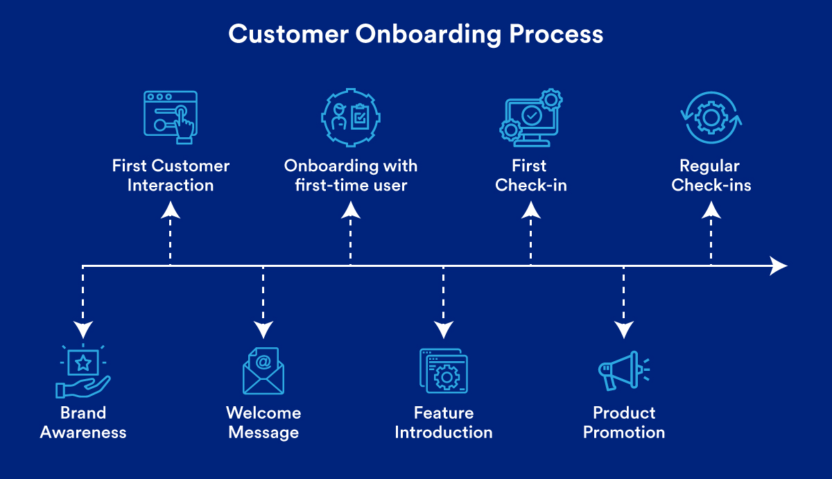
According to findings, the average onboarding process for a new corporate client can take up to 100 days. If your customer onboarding process lasts about 100 days on average, imagine the extent of revenue loss and time wastage your business might experience, even if you’re a small-scale company.
Customer onboarding done the right way can allow you to:
- Integrate new customers into your business
- Ensure customers understand your product/service and boost their confidence in said product/service
- Deliver value to customers early on in the customer lifecycle and drive engagement throughout their association with the brand
Customer onboarding is essential because it sets the tone for the customer’s relationship with your business. It can well and truly be the difference between a happy, engaged customer and a frustrated one.
Here are some reasons why customer onboarding is important:
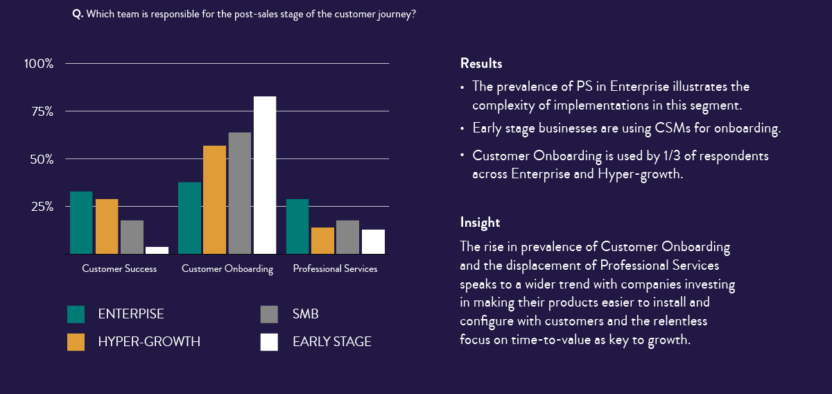
- It sets expectations for your product or service:
By explaining the features, and benefits of your product, you can ensure that the customer understands what they’re getting and what they can expect.
In fact, for 82% of enterprises, the onboarding approach doubles up as a key driver of value.
- It reduces churn:
It lowers customer churn and increases customer engagement by helping customers get started quickly and effectively. As per data, a staggering 90% of customers feel that the companies they buy from, ‘could do better when it comes to onboarding new customers.’
- It increases customer satisfaction:
When customers feel that you’re invested in their success, they’re more likely to be satisfied with their experience.
- It leads to upsells and referrals:
Upsells and referrals also increase as engaged customers are more likely to purchase additional features or refer others to your business.
2. What Does a Customer Onboarding Process Look Like for B2C Companies?
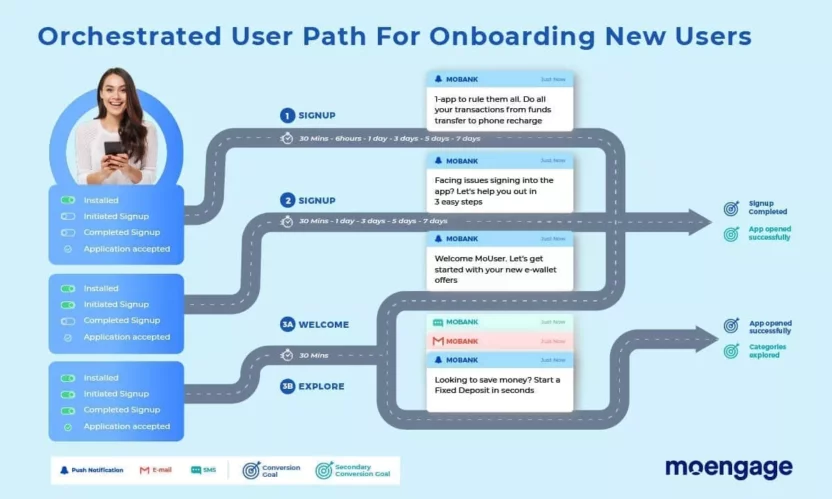
The customer onboarding process for B2C (business-to-consumer) companies typically involves:
- Empowering customers to gain a thorough knowledge of the product
- Introducing customers to key aspects of the product such as:
- Newly launched and exciting features
- Demonstrating the advantages and benefits of the product
- Addressing their key concern– “What’s in it (product) for them?”
- Providing customers with a quick rundown on how to use the product optimally (How-to tutorials for instance)
For 86% of respondents they’d be more likely to stay loyal to a business that invests in onboarding content that welcomes and educates them after they’ve bought.
Here’s a quick run-through of what a customer onboarding process looks like across different industries:
a) E-commerce
E-commerce companies often have a straightforward, easy-to-implement onboarding process that focuses on letting the consumers experience the product for themselves.
The steps involved in the process usually are:
- Creating an account
- Adding payment information
- Placing an order
| Pro tip: Offer incentives for first-time customers, such as discounts or free shipping. |
b) Streaming services
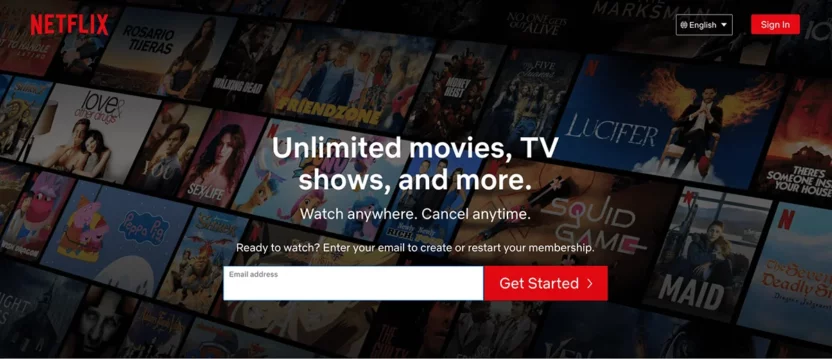
The onboarding process for streaming services like Netflix or Hulu focuses on offering a hyper-personalized customer experience. For example, in the case of Netflix, personalization begins with the onboarding process:
First, new customers are given the flexibility to choose a plan of their liking:
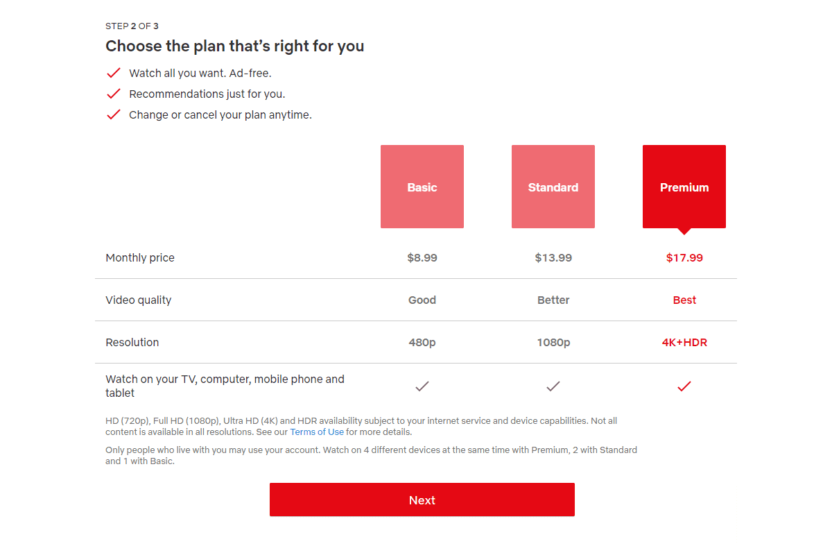
During the onboarding process, the brand asks customers to select TV shows and movies of their liking. This data enters Netflix’s recommendation engine, which serves up personalized offerings.
The recommendations are based on a variety of customer data touch points such as:
- Interactions with the service (viewing history, ratings of other titles)
- Similar tastes and preferences of other members
- Information about genre, categories, actors, release year, etc.
- The time of day the customer watches the program
- The devices on which members watch Netflix
- How long the customers watch the program
With all these data points, the brand is able to create millions of personalized customer profiles, complete with each individual’s interests, preferences, location, demographics, and more.
| Pro tip: Add useful tutorials and guided tours to help new customers get started seamlessly. |
c) Fitness apps
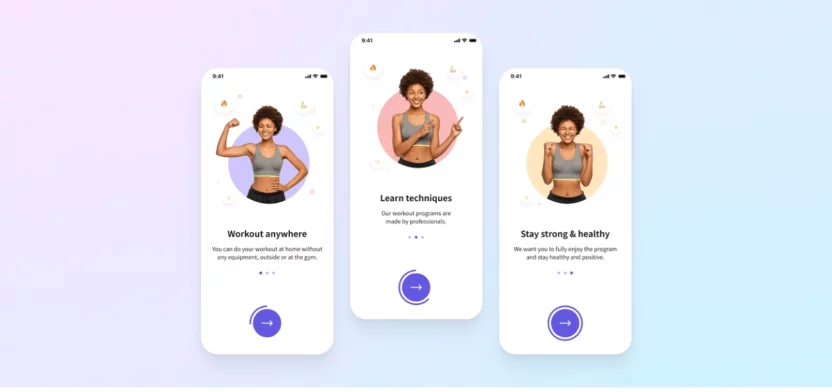
When it comes to onboarding fitness apps, attention to detail is key. Fitness apps such as Apple’s Health app collates and analyzes health and fitness data from multiple platforms and touchpoints such as:
- Customer’s iPhone
- Built-in sensors in the customer’s Apple Watch
- Compatible third‑party devices and apps that use HealthKit
At different stages during the onboarding journey, the app asks for relevant data such as:
- Body measurements (height, weight, and so on)
- Number of steps, flights of stairs, and other walking data
- Mobility data such as walking asymmetry, double support time, etc.
- Sleep history
- Health records from the customer’s healthcare providers, which includes medication, allergies, medical conditions, and so on
With all the crucial data stored in one place, delivering a good experience across the customer’s lifecycle becomes easier. The success of Apple’s Health app lies in the fact that it treats every customer’s health goals as unique.
In terms of the onboarding process, fitness apps require customers to:
- Set up a customer profile with all the relevant details captured
- Connect associated devices that can help monitor the customer’s overall health and well-being
- Select fitness goals, which also include calorie goals
| Pro tip: To make the onboarding seamless, offer personalized training plans and live coaching sessions. |
d) Banking
The onboarding process for banking institutions typically involves a series of steps designed to verify the identity of the customer and assess the risk associated with the account.
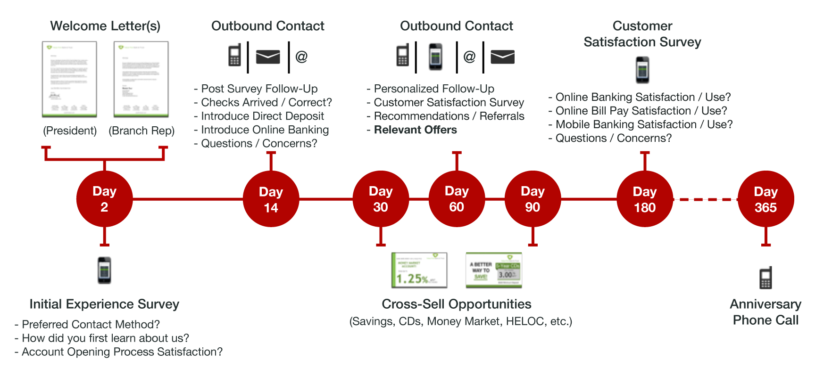
- Collecting customer information
- Verifying customer identity
- Setting up accounts
- Adding payment methods
- Educating the customer on the product and providing support
- Assessing risks
| Pro tip: You can also offer financial planning tools and tutorials on how to use online banking features. |
Remember that each brand has a unique approach to onboarding; however, the basic steps should be designed to help the customer get started quickly and easily.
3. Benefits of Customer Onboarding
Here are some benefits of having a well-designed customer onboarding process:
a) Improved Customer Experience and Brand Evangelism
When customers have a positive experience with your product or service, they are more likely to recommend it to others.
This word-of-mouth marketing is powerful, as it can reach a large audience at no cost to the company.
Use-case: Apple’s Genius Bar Provides Assistance to Customers
Apple’s Genius Bar is a great example of a customer onboarding process that helps customers understand how to use their products and make them feel valued:
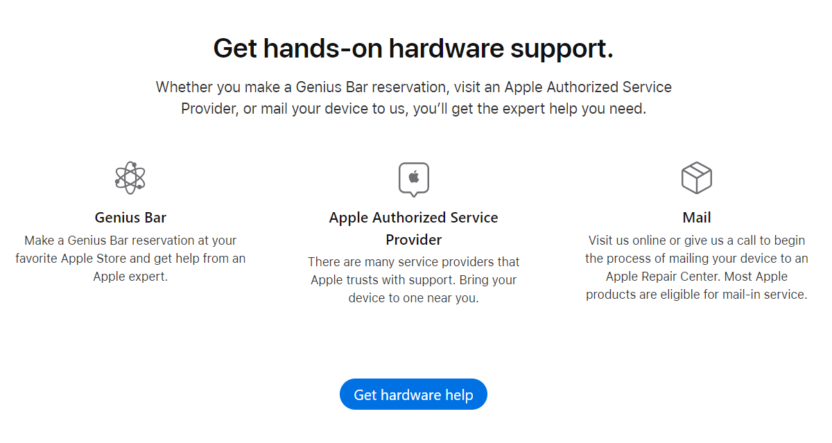
The Genius Bar provides one-on-one assistance to customers who have questions or need help with their Apple devices. This personalized experience helps build a loyal customer base and get positive reviews, recommendations, and referrals.
b) Social Proofing
Social proof is the phenomenon wherein people are influenced by the actions of their peers, friends or influential people.
Offering a great onboarding experience can help companies create social proof that their product or service is worth using. This can lead to more customers and in turn increased revenue.
Use-case: Airbnb Creates a Community of Hosts
Airbnb’s onboarding process includes a feature where new hosts can connect with experienced hosts who can provide tips and advice:
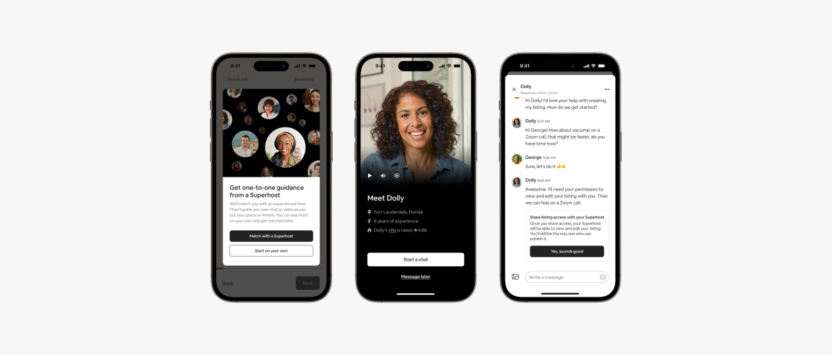
This strategy is extremely useful in creating a community of hosts who can vouch for the value of Airbnb’s service for the benefit of new customers.
c) Increased Retention
When customers know how to use a product or service effectively with the help of a strong onboarding process, they are more likely to renew their subscriptions or purchase additional products and stay with the brand for a long time.
Use-case: Luminary Includes a Welcome Email
Luminary’s onboarding process includes a short and simple welcome email to help new customers understand how to use the product effectively:
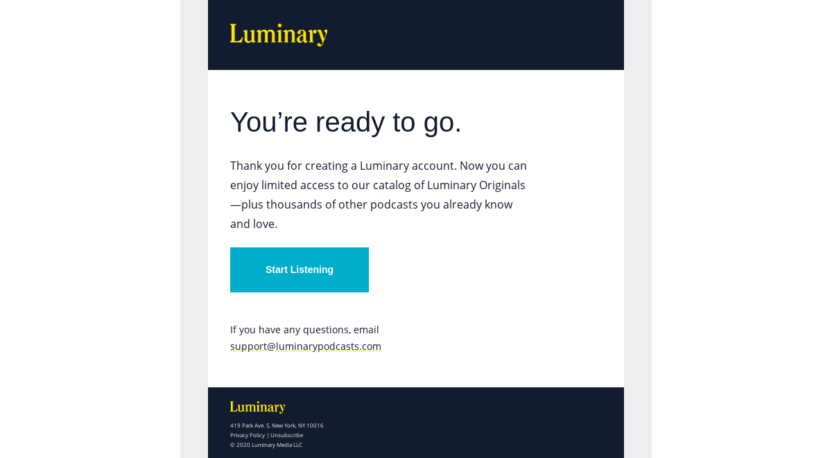
The end result? Higher customer retention rates and increased revenue.
d) Informed and Educated Customers
55% of customers claim to have returned a product because they didn’t fully understand how to use it. This is why having a clear onboarding process is paramount.
Use-case: Slack Presents a Helpful Tutorial
Slack’s onboarding process includes a tutorial that shows customers how to use the app’s features effectively:
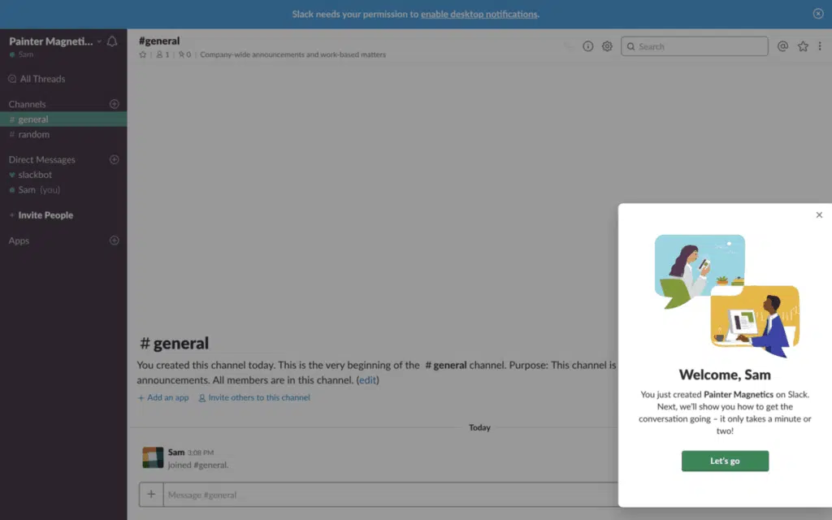
4. Customer Onboarding Best Practices
a) Start With an Effective Onboarding Plan
The first step in creating a successful customer onboarding experience is to develop a plan.
A well-structured plan can help you:
- Identify your customer’s needs, expectations, and pain points
- Leverage a clear roadmap for your customer success team to follow
Your customer onboarding plan should include the following elements:
- Customer persona: Identify who your customers are, their goals, and their pain points to personalize your onboarding experience.
- Customer onboarding checklist: Create a checklist of tasks to be completed during the onboarding process.
- Touchpoints: Identify key touchpoints where your customers interact with your product or service (think: sign-up, welcome emails, and follow-up emails).
- Onboarding timeline: Create a timeline for the onboarding process that outlines the activities and touchpoints that will occur at each stage.
b) Conduct Research for the Best Customer Onboarding Tools
To create a seamless onboarding experience, it is essential to use the right tools based on the right customer onboarding metrics.
There are many customer onboarding tools available in the market, so it’s important to narrow down on one that suits your business needs.
c) Personalize Your Customer Onboarding Experience
Personalization is key to a successful onboarding experience. By understanding your customer’s needs and preferences, you can tailor the onboarding experience to their specific requirements.
Some examples of personalization include:
- Customizing welcome messages: Address the customer by name and personalize the message based on their interests and preferences.
- Providing relevant content: Offer personalized training and tutorials that align with the customer’s goals and pain points.
- Offering personalized support: Provide a dedicated customer success manager who can assist the customer with any questions or concerns they may have.
d) Define Goals and Objectives for Customer Onboarding
Setting clear goals and objectives is the bedrock for measuring the success of your onboarding program. These goals should be aligned with your business objectives and should be specific, measurable, and achievable.
Some examples of onboarding goals include:
- Reducing customer churn: Ensure that customers remain loyal to your product or service.
- Increasing adoption: Encourage customers to use your product or service regularly.
- Improving customer satisfaction: Ensure that customers are satisfied with the onboarding experience and the product or service.
e) Continuously Assess Your Customer Needs
Customer needs can change over time, so it’s essential to regularly assess and update your onboarding program to ensure it remains relevant and effective.
You can assess customer needs in the following ways:
- Conducting customer surveys: Ask for customer feedback on the onboarding experience.
- Analyzing customer data: Review customer usage patterns and behavior to identify areas for improvement.
- Engaging with customers: Regularly engage with customers to understand their needs and pain points.
f) Crafting an Effective Sign-Up Process
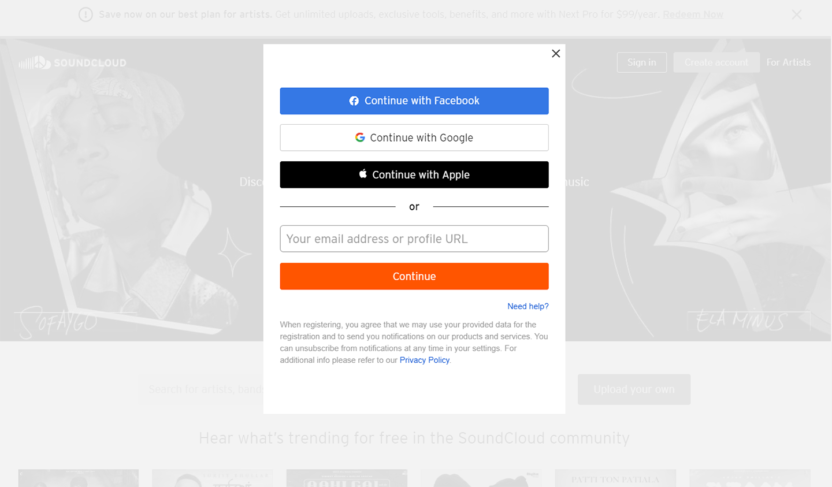
The sign-up process is the first step in the customer onboarding journey, and it’s important to make it as easy and consumer-friendly as possible.
Some best practices for the sign-up process include the following:
- Keep it simple: Only ask for essential information to reduce friction and make the process faster.
- Use social media sign-up options: Provide an option to sign up with social media accounts to simplify the process and increase conversion rates.
- Use progress indicators: Show progress indicators to help customers understand where they are in the process and what steps are remaining.
g) Optimizing Email Communication
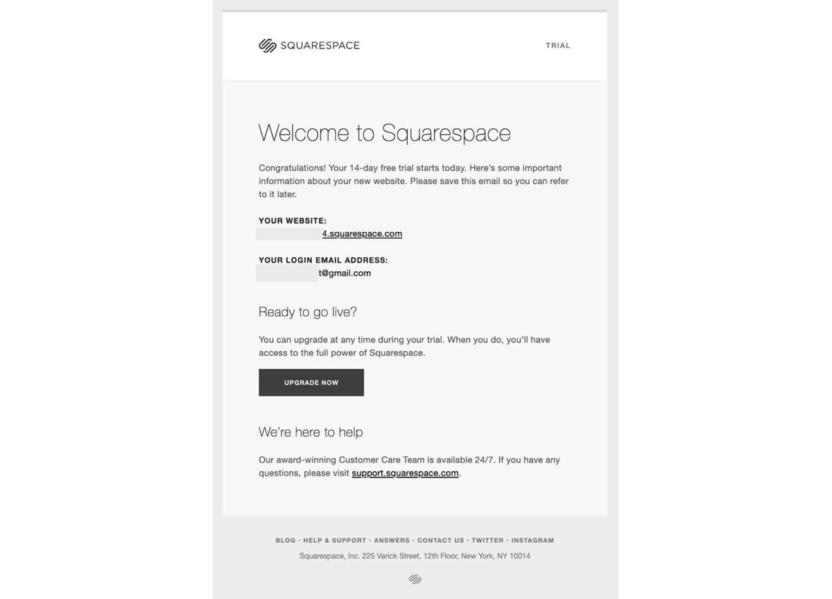
The welcome email is the first communication that new customers receive, and it sets the tone for the entire onboarding experience.
Here are some best practices for welcome emails:
- Personalize the email: Address the customer by name and use personalized content to make them feel valued.
- Set expectations: Explain what the customer can expect from the onboarding process and what steps they need to take.
- Provide useful resources: Provide links to relevant resources like tutorials, guides, and FAQ sections to help customers get started.
h) Setting Up The Right Email Follow-Ups
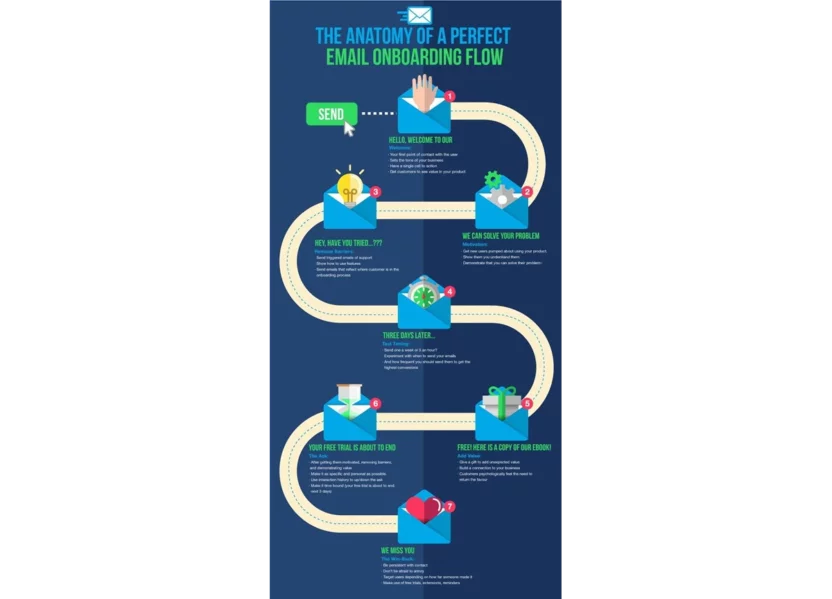
Follow-up emails are essential for keeping customers engaged and guiding them through the onboarding process.
Here are some best practices for follow-up emails:
- Use segmentation: Send personalized emails based on the customers’ interests and behavior to improve engagement rates.
- Provide support: Offer support and guidance to customers by answering common questions or providing resources they may find useful.
- Encourage feedback: Ask customers for feedback to understand their pain points and improve the onboarding experience.
i) Customer Learning Platform: 3 Must-Haves Of Your Knowledge Base
A customer learning platform or knowledge base is a crucial resource for customers to learn how to use your product or service.
Here are three must-haves for a successful customer learning platform:
- Easy navigation: Ensure that the knowledge base is easy to navigate, with clear categories and subcategories.
- Up-to-date content: Regularly update the knowledge base with new information, tutorials, and best practices to keep customers engaged.
- Search functionality: Include a search bar to help customers quickly find the information they need without having to browse through the entire knowledge base.
5. Customer Onboarding Checklist
Here’s a checklist you can use for your customer onboarding process:
a) Welcome email
- Send a welcome email to the customer after they sign up, welcoming them to your brand and thanking them for choosing your product/service.
- Provide an overview of your brand’s mission and vision, and explain how your product/service can help them achieve their goals.
b) Personalized follow-up
- Reach out to the customer with a personalized message based on their interests and preferences.
- Ask for feedback on their initial experience with your brand, and offer assistance with any questions or concerns they may have.
c) Product/service education
- Provide detailed information on your product/service, including how to use it, troubleshooting tips, and any relevant FAQs.
- Offer educational resources such as videos, tutorials, and guides to help customers get the most out of your product/service.
d) Customer success manager (CSM)
- Assign a dedicated customer success manager (CSM) to each customer, who can provide personalized support and guidance throughout their journey with your brand.
- Schedule regular check-ins with the CSM to discuss progress, address any issues, and provide feedback.
e) Customer community
- Offer access to a customer community where customers can connect with each other, share experiences, and learn from each other.
- Host events, webinars, and other activities to keep customers engaged and connected with your brand.
f) Incentives
- Offer incentives such as discounts, free trials, or other perks to encourage customers to continue using your product/service and refer others to your brand.
- Show appreciation for their loyalty and support by offering personalized rewards and recognition.
g) Ongoing communication
- Keep the customer informed about new features, updates, and other important news related to your brand.
- Encourage them to provide feedback, participate in surveys, and share their experiences with your brand on social media and other platforms.
By following this template, you can create a comprehensive onboarding process that helps customers feel welcomed, educated, and supported throughout their journey with your brand.
Summary: Final Thoughts on Customer Onboarding
Despite businesses prioritizing customer onboarding, few are able to onboard customers the right way.
Instead of analyzing customer information, driving actionable insights, and communicating value adds, brands are engaging in half-baked attempts to onboard customers. Either the data collation and analysis is incomplete or the customers feel overwhelmed with the onboarding process and decide to jump ship.
To create an onboarding journey, that your customer will appreciate, it is essential to:
- Make the process welcoming and personalized
- Collate and analyze customer data at every stage of the lifecycle
- Offer clear instructions and guide customers at every step
- Provide options for one-on-one onboarding sessions, one-click access to video tutorials, knowledge base, etc.
- Keep the communication open and set realistic expectations
- Collect customer feedback and identify areas for improvement
Adhere to these best practices and bridge the personalization gap that plagues ill-conceived onboarding processes.
So, the only question that remains is – Is your brand willing to take customer onboarding to the next level?












